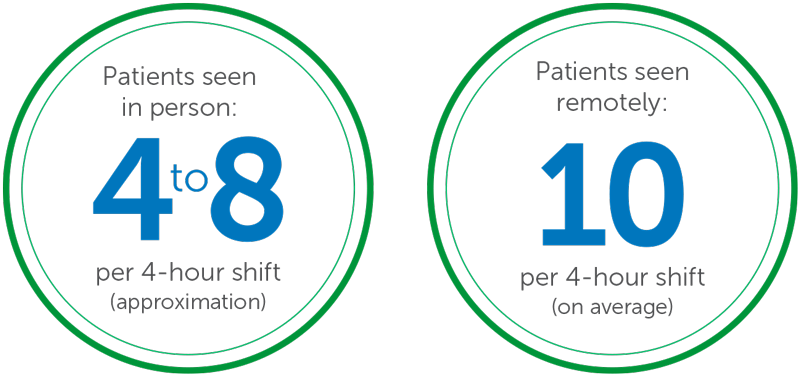Growing Neurology Patient Volume while Maintaining Quality with Telehealth Services
When a health network in the southeast lost one of its key providers, the clock started ticking to find an immediate and effective solution to continue offering high-quality neurology services. Recognizing the growing shortage of neurology providers, the facility sought an innovative solution to ensure continued care for the patient community.
Challenge
When the hospital’s primary neurologist retired, the facility needed immediate coverage to continue delivering critical neurology services, including general inpatient consultation. The hospital could not afford an interruption in service, as consistent and effective coverage was essential for keeping patient safety and avoiding offsite transfers.
Initially the hospital was bringing contracted neurologists in to fill the staffing gap. But with the increasing demand for neurology consultations, the leadership team recognized the need for a more sustainable, long-term solution. The hospital opted to implement a telehealth model for their neurology service line, with the goal of increasing patient volume and providing comprehensive care without the need for a full-time on-site provider.
Solution
After partnering with LT Telehealth to integrate a tele-neurology model as the primary means of delivering care, the hospital quickly realized that this approach delivered full-time neurology coverage without the challenges of maintaining an on-site specialist. Unlike many hospitals that use telehealth as a backup option, this facility boldly relied on remote care as their main form of providing neurological care.
The tele-team included thoroughly trained support staff, including medical assistants and nurse practitioners, who facilitated the virtual consults and ensured that patients received timely care. The tele-neurologists handled a wide range of cases, evolving toward general inpatient consultations.
With the technology in place, the hospital was able to fully cover its neurology needs through a virtual care model. The tele-neurologist continues to manage a patient load that has steadily increased over time. As the telehealth team became more familiar with the hospital’s needs and workflows, efficiency improved, and more patients could be seen during each shift.

Results
The tele-neurology program yielded significant benefits for the facility, particularly in terms of patient access, efficiency, and cost savings:
- Increased Patient Volume: The average number of patients seen per shift increased from 4-8 to a more consistent 10 on average.
- Improved Efficiency: Reduced bottlenecks, increased the overall patient throughput, and allowed the hospital to maintain safe and effective coverage.
- Decreased Cost of Care: By fully integrating tele-neurology, the hospital saved on costs associated with permanent staffing while maintaining high levels of patient care. This efficient use of resources resonated with hospital leadership and ensured long-term sustainability.

Conclusion & Looking Ahead
The success of this organization’s tele-neurology program only reinforces the viability of telehealth to deliver full-service specialty care at a reduced cost. By embracing this innovative solution, the hospital was able to maintain continuous neurology coverage, expand patient access, and improve efficiency—all without the need for a permanent on-site specialist.

As more hospitals explore the benefits of telehealth for specialized care, this example offers a blueprint for successful implementation, especially in a medical field struggling to bring on providers in conventional full-time roles.
Contact LocumTenens.com today to discuss tailored workforce solutions that reflect the specific needs of your facilities and patient communities.